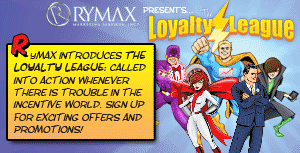Keeping Engagement Alive During Tough Times
By Dave Laclede, Senior Performance Management Consultant, Excellence In Motivation, Inc.
In the simplest terms, employee engagement is evidenced by passion for the work, high productivity levels and advocacy for the organization. BlessingWhite’s 2011 Employee Engagement Report indicates that engagement continues to be a serious concern. Only 31% of employees are engaged, while 17% are disengaged. Employees across many industries are still feeling the stress of heavy workloads, economic uncertainty, career stagnation and flat or declining compensation.
Since employee engagement is proven to have a measurable impact on profitability (due to enhanced productivity, innovation and the quality of goods and services delivered), the imperative for managers becomes the development of engagement strategies and practical implementation.
If you haven’t done so already, it’s time for you and your team members to take the initiative – define what your engagement objectives are and how they will be accomplished. Understand that engagement efforts don’t fall only to managers; the process needs to be a two-way street. Employees have high expectations of management, and management should have the same high expectations of their employees.
Management Issues
Here are some of the key issues management must address in order develop and sustain their engagement efforts.
Effective Leadership. Management has charted a compelling course for the organization. The mission is well understood and embraced by employees because they are empowered to turn the vision into reality.
Open Communications. News is constantly shared, both the good and the bad – no secrets, no hidden agendas, with office politics kept to a minimum.
Risk-Supportive Culture. Success comes through the embrace of new ideas, innovation and the acceptance of manageable risk. All points of view are solicited to get the best thinking and create effective solutions.
Recognition Environment. Outstanding work is publicly recognized on a consistent basis. Celebration of accomplishments, for both individuals and teams, becomes an integral part of a performance-oriented culture.
Constructive Performance Feedback. Clearly established job roles, responsibilities and expectations are communicated. Employees at every level receive regular input and appropriate coaching.
Management’s Expectations
On the employee side, here are some of the things that management should communicate, promote and expect.
Dependable Performance. Goods and services are delivered on time and within budget. Work effectively alone or as part of a team. Keep management informed of progress and potential obstacles to assignment completion.
Open Communications. News is constantly shared, both the good and the bad. Positive information is celebrated and negative information is handled honestly, quickly and effectively.
Solutions Recommendations. When a problem or opportunity surfaces, be prepared to make positive recommendations to address it. In terms of potential solutions, “Think it through and provide at least two.”
Make a Difference. If professional talents and skills are not being used to their fullest potential, employees are expected to discuss the situation with their manager. “Bad Career Fit” often lies at the heart of disengagement and can lead to needless turnover.
Constructive Performance Feedback. Employees are encouraged to offer advice and counsel to improve manager performance so that the entire team can benefit.
Don’t Fail To Act
Keeping engagement alive during tough times can be viewed either as a burden or an interesting challenge. Note that “Waiting around for things to get better” can have serious consequences. For example:
- Professional burnout due to stress and/or boredom, resulting in low productivity
- Work conducted at only marginally acceptable performance levels
- Knowledge and expertise taken to another workplace – or worse, to a competitor
- Higher than normal turnover and hiring/training expenses
- Vicious cycle of reduced revenue and profit, as product and service quality is negatively impacted and customer satisfaction levels decline
The costs involved in creating a performance-driven culture can be relatively small. Soft dollar costs include advance planning, collaboration, proper follow-up and positive behavioral adjustments on everyone’s part.
Tactical Elements
Some of the tactical elements below require hard dollar investments.
- Survey employees to determine current engagement levels and identify areas for improvement
- Establish recognition criteria based on the organization’s core mission and values
- Align recognition, incentive, career development and compensation to organizational objectives
- Provide a web-based process for managers and associates to recognize and reward each other for superior performance
- Measure employee engagement level every six months and communicate the results
When managers and employees take constructive action to improve engagement, benefits accrue to the entire organization, the customer base and the larger community.
Excellence In Motivation is a full-service performance improvement company headquartered in Dayton, OH. For more information about EIM, visit www.eim-inc.com
Subscription Center
Subscribe to Engagement Strategies Magazine
Update Your Subscriptions



.jpg)


Comments
Show: Newest | Oldest
Post a Comment